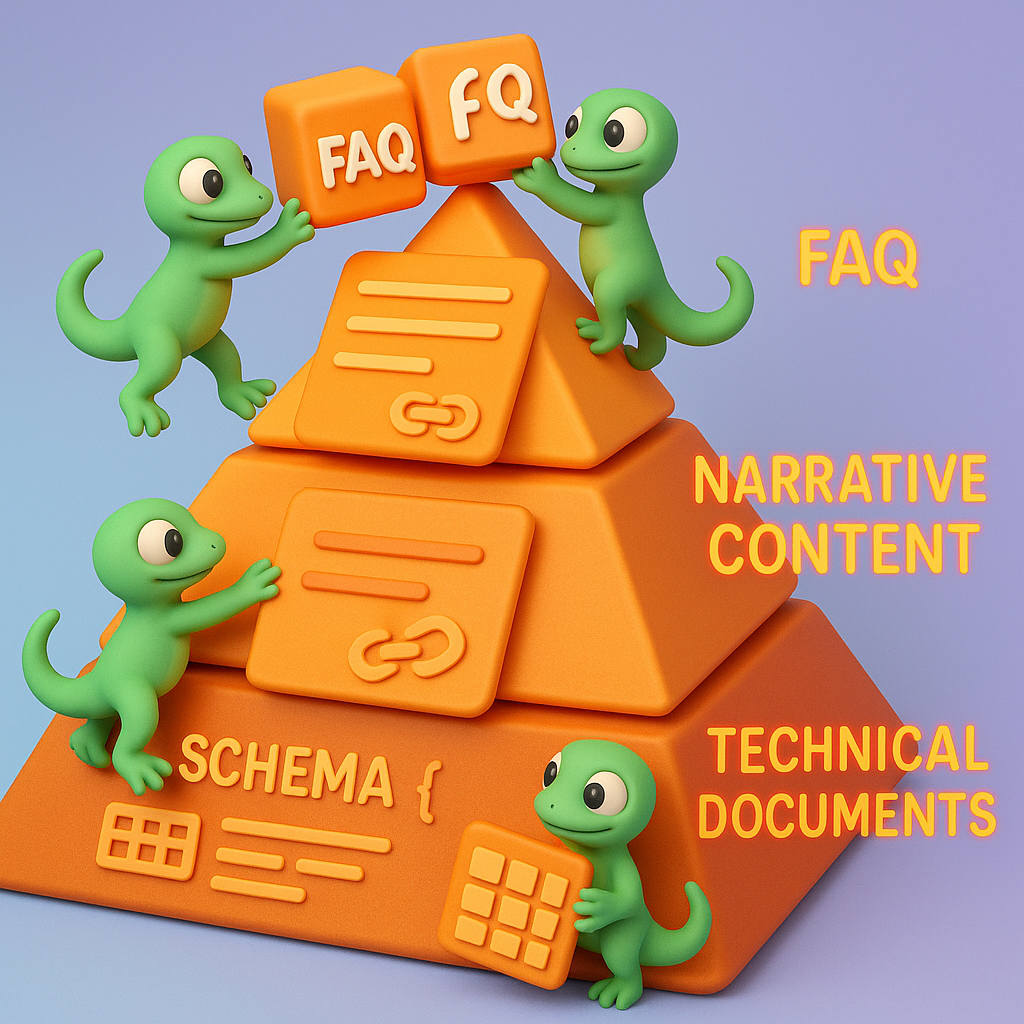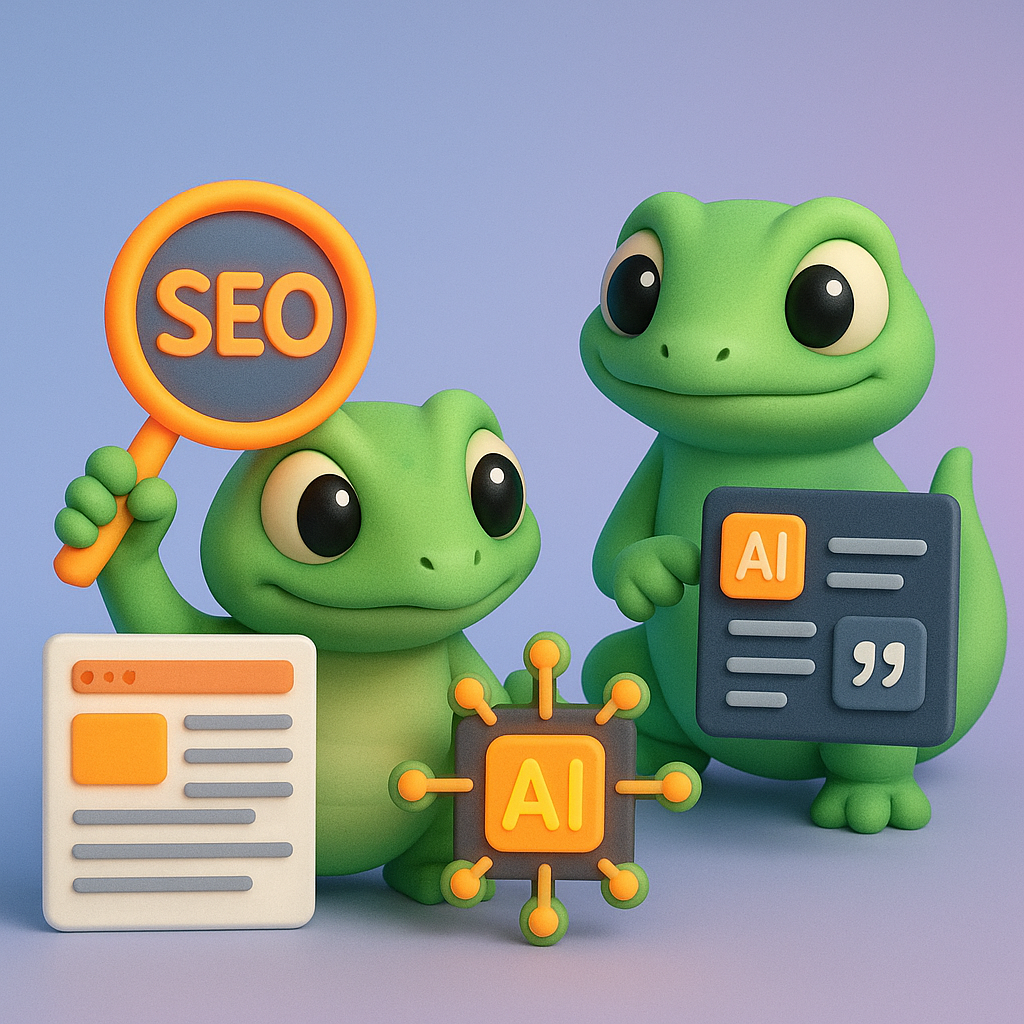Balancing Semantic SEO with Generative Engine Optimization for Smarter Content Strategies
In today’s evolving search landscape, marketing leaders face a critical challenge: optimizing content for both traditional semantic search and AI-powered generative engines. The stakes are high—as LLM-based search grows, companies that fail to adapt risk digital obscurity.
Understanding the Dual Optimization Challenge
Semantic SEO and Generative Engine Optimization (GEO) operate on different principles but serve complementary goals:
| Aspect | Semantic SEO | Generative Engine Optimization (GEO) |
|---|---|---|
| Primary Focus | Natural language understanding, intent matching | AI citation likelihood, structured data for LLMs |
| Content Structure | Entity-focused with narrative flow | Structured facts, citations, summaries |
| Metrics | Rankings, traffic, CTR | AI citation frequency, LLM visibility |
| Technical Emphasis | Schema markup, entity relationships | Semantic HTML, factual accuracy, citation-worthy data |
Research shows that while traditional SEO still dominates with 95.7% market share, GEO adoption is rising rapidly in conjunction with AI search platforms. With Harvard Business Review reporting 58% of consumers now using generative AI for recommendations (up from 25% in 2023), the time to implement dual optimization strategies is now.
Strategic Integration Techniques
1. Layered Content Architecture
Create content with a deliberate structure that serves both optimization needs:
- Top Layer: Concise, factual summaries and structured Q&A blocks (GEO-focused)
- Middle Layer: Comprehensive, semantically-rich content with entity relationships (Semantic SEO)
- Bottom Layer: Technical documentation, citations, and structured data (Both)
This approach satisfies both the citation needs of generative engines and the contextual depth required by semantic search algorithms. Think of it as building a content pyramid—the broad base provides depth for traditional search while the pointed top offers clear extraction points for AI.

2. Content Formatting Best Practices
✅ Use clear hierarchical headings (H2, H3) for both human readers and AI parsing✅ Include structured data blocks (tables, lists, bullet points) for easy AI extraction✅ Implement FAQ schema markup for voice/conversational search optimization✅ Provide source citations and references throughout content✅ Use natural language for conversational queries while maintaining keyword relevanceA healthcare provider implementing this dual approach saw their symptom checker content both rank well in traditional search and become frequently cited in AI health responses through clinical verification and structured data. Their approach included creating symptom-specific FAQ blocks at the top of each page while maintaining in-depth explanatory content below—giving both AI engines and traditional search algorithms what they needed.
3. Technical Implementation
Apply technical optimizations that benefit both search types:
- Schema Markup: Implement comprehensive schema (FAQPage, HowTo, Product) to aid both traditional featured snippets and AI extraction
- Entity Optimization: Use free keyword clustering tools to group semantically related concepts
- Comprehensive Research: Create citation-worthy content with factual accuracy for GEO while satisfying semantic search depth requirements
For example, a finance blog implementing this approach would include schema-marked definitions of complex terms, tabular data comparing options, and citation links to authoritative sources—all elements that serve both traditional and AI search needs.
4. Sector-Based Prioritization
Not all industries should balance semantic SEO and GEO equally:
- GEO-First Sectors: SaaS, finance, healthcare, and content-heavy niches where AI responses are prominent
- SEO-First Sectors: E-commerce, local businesses, and industries with stable search market share
A SaaS company might prioritize structured documentation and feature comparisons (GEO-friendly) while an e-commerce site could focus more on traditional product-focused semantic optimization with secondary AI enhancements.
Measurement and Performance Tracking
To effectively balance both optimization strategies, establish comprehensive tracking:
- Traditional SEO Metrics: Rankings, organic traffic, CTR, conversion rates
- GEO-Specific Metrics: AI citation frequency, brand mentions in AI outputs, AI-driven referral traffic
- Hybrid Metrics: Featured snippet captures, voice search appearances
Companies using an integrated approach typically achieve 15-20% increases in featured snippet captures and more consistent AI brand mentions, according to industry benchmarks. For tracking LLM visibility specifically, marketers should explore specialized tools for monitoring LLMO performance.
Overcoming Common Challenges
| Challenge | Solution |
|---|---|
| Over-Optimization | Use modular content with separate sections for SEO vs. GEO |
| Content Duplication | Repurpose core data into structured formats (tables, FAQs) |
| Technical Complexity | Prioritize high-impact GEO elements (e.g., source citations) |
| Quality Control | Balance AI efficiency with human oversight |
| Measurement Complexity | Implement tracking systems for both traditional and AI-specific metrics |
Consider the example of a legal content site that struggled with technical complexity. They started by focusing on high-impact elements like FAQ schema and authoritative citations before gradually adding more technical implementations. This phased approach allowed them to see benefits quickly while building toward comprehensive optimization.
Implementing a Balanced Strategy with ContentGecko
ContentGecko’s AI-powered platform helps marketing leaders implement this balanced approach through:
- Semantic Keyword Clustering: Automatically group keywords by intent and meaning
- Content Structure Optimization: Format content for both semantic search and AI citation
- Quality Control: Ensure factual accuracy and citation-worthiness while maintaining SEO fundamentals
This balanced approach delivers significantly better results than focusing exclusively on either optimization technique. When properly implemented, companies can achieve up to 10x monthly organic traffic growth without requiring costly teams or complex technical implementations.

A B2B software company using ContentGecko’s approach saw a 3x increase in featured snippet captures and began appearing in AI-generated responses across their industry’s most valuable search queries—all within three months of implementation.
Future-Proofing Your Strategy
As search evolves, the line between semantic SEO and large language model optimization will continue to blur. Tomorrow’s most successful content strategies will:
- Build comprehensive, authoritative content ecosystems
- Prioritize factual accuracy and structured data
- Maintain traditional SEO fundamentals while embracing new LLM optimization techniques
The convergence of these approaches mirrors how search itself is evolving. As LLM search becomes more prevalent, the practices that optimize for both paradigms will become standard industry practice rather than specialized approaches.
For deeper insights, explore these differences between traditional SEO and LLMO techniques or learn about the ROI of LLM optimization.
TL;DR
Balancing semantic SEO with generative engine optimization requires a structured approach combining traditional keyword optimization with AI-focused content structuring. The most effective strategies layer content to serve both algorithms, implement comprehensive schema markup, and maintain factual accuracy with citations. By tracking both traditional and AI-specific metrics, companies can achieve significantly better visibility across all search interfaces while maximizing the ROI of their content investments.
